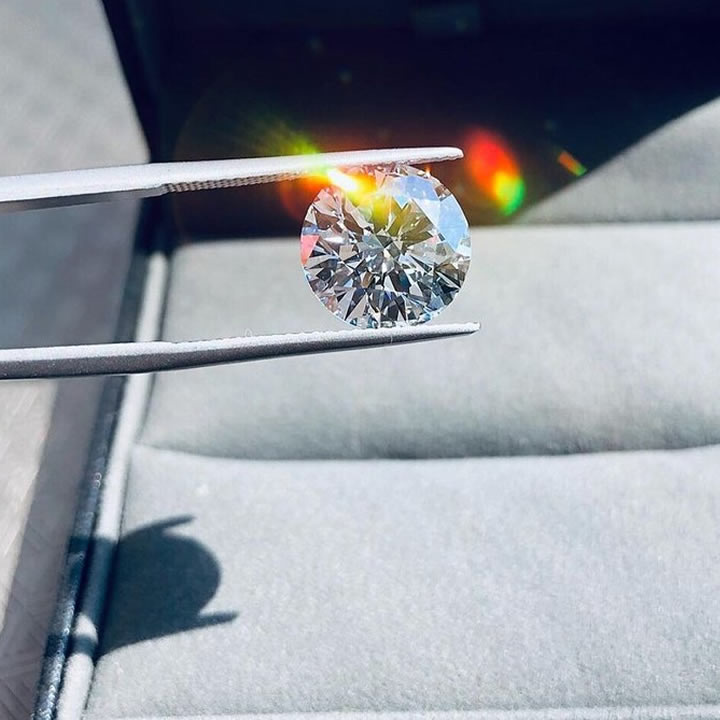In recent years, a remarkable shift has taken place in the world of diamonds. While traditionally mined diamonds have long held the spotlight, laboratory-grown diamonds have emerged as a groundbreaking alternative.
These diamonds, also known as cultured or synthetic diamonds, are created in controlled laboratory environments, mirroring the natural process that occurs deep within the Earth’s mantle.
This revolutionary technology has not only disrupted the diamond industry but also sparked a conversation about sustainable luxury.
In this blog, we delve into the fascinating world of laboratory-grown diamonds, exploring their creation process, ethical implications, environmental benefits, and their impact on the global market.
Understanding the Genesis: How are Laboratory-Grown Diamonds Created?
Laboratory-grown diamonds are cultivated using two primary methods:
- Chemical Vapor Deposition (CVD)
- High Pressure-High Temperature (HPHT)
Chemical Vapor Deposition (CVD)
This method involves placing a diamond seed (a small piece of natural diamond) in a controlled environment filled with carbon-rich gases. Through a carefully calibrated process, carbon atoms gradually accumulate on the seed, layer by layer, eventually forming a full-sized diamond.
High Pressure-High Temperature (HPHT)
HPHT mimics the conditions of the Earth’s mantle, where natural diamonds are formed. A carbon source, typically a graphite material, is subjected to extreme pressure and high temperature, inducing the carbon atoms to crystallize and form a diamond.
Ethical Brilliance: The Ethical Implications of Lab-Grown Diamonds
One of the most significant advantages of laboratory-grown diamonds is their ethical provenance. Traditional diamond mining has been plagued by concerns over human rights violations, child labor, and conflict financing.
In stark contrast, lab-grown diamonds eliminate these ethical dilemmas.
They are produced in controlled, safe environments, free from the socio-economic issues that often plague diamond mines. Consumers can wear these diamonds with confidence, knowing that they are not contributing to harmful practices.
Sparkling Sustainability: The Environmental Footprint of Lab-Grown Diamonds
The environmental impact of diamond mining is well-documented, with open-pit mining causing habitat destruction, water pollution, and significant carbon emissions. Lab-grown diamonds, on the other hand, have a substantially lower environmental footprint.
They require less energy and water to produce and generate significantly fewer carbon emissions compared to their mined counterparts. Additionally, the controlled environment in which they are created ensures that no damage is done to natural ecosystems.
A World of Choices: The Diversity of Laboratory-Grown Diamonds
Laboratory-grown diamonds offer an unparalleled range of choices for consumers.
They can be produced in various colors, shapes, and sizes, providing an extensive selection for jewelry designers and buyers. This diversity allows for greater creativity and customization in jewelry design, offering a level of versatility that is difficult to achieve with mined diamonds.
Market Dynamics: Lab-Grown Diamonds in Today’s Industry
The emergence of laboratory-grown diamonds has disrupted the traditional diamond market. With increasing consumer awareness and demand for ethically sourced and sustainable products, lab-grown diamonds have gained substantial traction.
Jewelry designers, retailers, and consumers alike are recognizing the value and beauty of these man-made gems. As a result, major players in the diamond industry are diversifying their offerings to include laboratory-grown diamonds, marking a pivotal shift in the market.
Bridging Generations: Lab-Grown Diamonds and Future Sustainability
As we look towards a more sustainable future, laboratory-grown diamonds represent a crucial step in the right direction. Their ethical and environmental benefits make them a compelling choice for conscientious consumers.
Moreover, the technological advancements driving the production of lab-grown diamonds continue to evolve, promising even greater efficiency and sustainability in the years to come.
Conclusion: Shining a Light on Sustainable Luxury
Laboratory-grown diamonds have transcended their status as a niche alternative and are now at the forefront of a new era in luxury jewelry.
Their ethical origin, reduced environmental impact, and diverse range of options position them as a compelling choice for consumers who value both beauty and sustainability.
As the demand for ethical luxury continues to grow, laboratory-grown diamonds are poised to play a central role in shaping the future of the diamond industry.
In this era of conscious consumerism, laboratory-grown diamonds stand as a beacon of hope, illuminating the path toward a more sustainable and ethically sound world of luxury.
With this comprehensive exploration, we have shed light on the multifaceted world of laboratory-grown diamonds. From their creation process to their ethical implications and environmental benefits, these gems represent a remarkable stride toward sustainable luxury.
As the diamond industry undergoes a transformative shift, laboratory-grown diamonds are poised to take center stage, offering a brilliant choice for the conscientious consumer.

